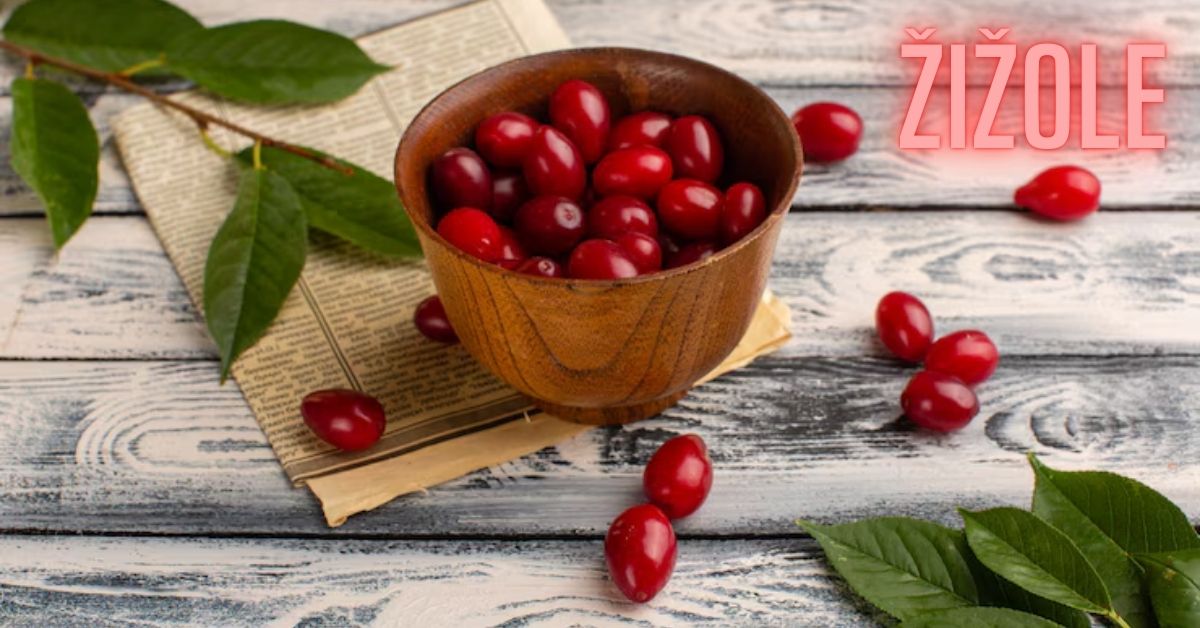Contents
- 1 Introduction
- 2 What Is Žižole?
- 3 Origins and Historical Significance
- 4 Botanical Background
- 5 Nutritional Profile of Jujube
- 6 Health Perks of Žižole
- 7 Culinary Uses of Jujube
- 8 How to Select and Store Žižole
- 9 Growing Jujube at Home
- 10 Traditional and Medicinal Uses
- 11 Žižole in Global Cuisine
- 12 Žižole and Modern Wellness Trends
- 13 Side Effects and Precautions
- 14 FAQs (Frequently Asked Questions)
- 14.1 What does Žižole taste like?
- 14.2 Is Žižole the same as jujube?
- 14.3 Can I eat Žižole every day?
- 14.4 How do I use Žižole in cooking?
- 14.5 Where can I buy Žižole?
- 14.6 Are there any medical benefits?
- 14.7 Can children eat Žižole?
- 14.8 What are the best ways to preserve Žižole?
- 14.9 Can Žižole be used for skincare?
- 15 Conclusion
Introduction
In the world of fruits, some gems remain hidden despite centuries of existence. One such treasure is Žižole, a fruit steeped in ancient tradition and cultural significance. Also known as jujube or Chinese date in various parts of the world, Žižole has made its way from traditional remedies to gourmet kitchens.
This guide explores the origins, nutritional benefits, and culinary applications of this often-overlooked but powerful fruit.
What Is Žižole?
Žižole, scientifically known as Ziziphus jujuba, is a small, reddish-brown fruit that grows on the Ziziphus tree, native to parts of Asia and the Mediterranean. While the name “Jujube” is commonly used in the Balkans and Eastern Europe, the fruit has global appeal due to its sweet flavor, chewy texture, and impressive health properties.
Other Common Names
- Jujube
- Chinese date
- Red date
- Indian jujube (a slightly different species)
Origins and Historical Significance
Ancient Roots
The cultivation of Žižole dates back more than 4,000 years, with documented usage in ancient China and the Middle East. Historical texts indicate that the fruit was a staple in traditional Chinese medicine and frequently mentioned in Greek and Roman writings.
Cultural Importance
In many cultures, Žižole is more than just a food item. It symbolizes health, prosperity, and longevity. For example:
- In China, it’s used in wedding ceremonies to bless couples with fertility.
- In parts of Eastern Europe, it’s offered during religious and festive occasions.
Botanical Background
The Ziziphus Tree
The Ziziphus tree is a hardy deciduous plant that can grow up to 10 meters tall. Its small, oval leaves and thorny branches make it well-suited to dry climates.
Growing Conditions
- Temperature: Prefers hot, dry climates
- Soil: Thrives in sandy, well-drained soil
- With the right treatment, one can live for up to 50 years.
Nutritional Profile of Jujube

Jujube may be small, but it packs a powerful punch when it comes to nutrition.
| Nutrient | Amount per 100g |
|---|---|
| Calories | 79 |
| Protein | 1.2g |
| Carbohydrates | 20g |
| Fiber | 2.6g |
| Vitamin C | 69mg (115% DV) |
| Potassium | 250mg |
| Iron | 0.5mg |
Key Nutrients
- Vitamin C: Boosts the immune system and promotes collagen production.
- Antioxidants: Contains flavonoids and polyphenols that fight free radicals.
- Iron and Potassium: Supports blood health and electrolyte balance.
Health Perks of Žižole
1. Boosts Immunity
Thanks to its high vitamin C content, Jujube helps enhance immune function. Regular consumption can reduce the duration of colds and improve overall health resilience.
2. Enhances Sleep Quality
Traditionally used in herbal medicine to treat insomnia, Žižole contains compounds like saponins that promote relaxation and improve sleep quality.
3. Supports Digestive Health
Rich in fiber, this fruit aids digestion and helps prevent constipation. Additionally, it promotes the development of beneficial intestinal flora.
4. Anti-Inflammatory Benefits
Studies have shown that the antioxidants in Jujube help reduce inflammation, making it beneficial for people with chronic conditions like arthritis.
5. Aids in Weight Management
Despite being sweet, Žižole has a relatively low calorie content, making it a great snack for those watching their weight.
6. Promotes Skin Health
Vitamin C and antioxidants in Jujube contribute to youthful, glowing skin by neutralizing free radicals and promoting collagen production.
7. Regulates Blood Sugar Levels
Some studies suggest that Žižole may help stabilize blood sugar, making it beneficial for individuals with diabetes or metabolic syndrome.
READ ALSO: Top 5 Beans Recommended by Experts
Culinary Uses of Jujube
Fresh vs. Dried Jujube
- Fresh Jujube has a crisp texture, similar to an apple.
- Dried Žižole is chewy and sweet, often likened to dates.
Popular Dishes Featuring Jujube
1. Žižole Tea
- Ingredients: Dried Žižole, water, honey (optional)
- Instructions: Boil the dried fruit in water for 20 minutes and add honey for taste. This calming tea is perfect before bedtime.
2. Baked Goods
Žižole can be chopped and added to muffins, bread, and cakes for natural sweetness.
3. Salads
Fresh Žižole slices add a sweet and crunchy texture to salads, pairing well with nuts and cheese.
4. Sauces and Chutneys
Simmer dried Jujube with vinegar, sugar, and spices to create a unique chutney that pairs well with meats.
5. Energy Snacks
Combine chopped dried Žižole with oats, nuts, and honey to form energy bars or balls.
6. Smoothies
Blend fresh Jujube with banana, yogurt, and a dash of cinnamon for a nutritious smoothie.
7. Traditional Dishes
In Middle Eastern cuisine, Žižole is often added to couscous or rice dishes for added sweetness and nutrition.
How to Select and Store Žižole
Buying Tips
- Fresh Žižole should be firm and free from blemishes.
- Dried Jujube should be chewy, not overly hard or too shriveled.
Storage
- Store fresh Žižole in the refrigerator for up to two weeks.
- Dried Jujube can last for several months when kept in an airtight container in a cool, dry place.
Growing Jujube at Home
Basic Growing Conditions
- Soil: Well-drained, sandy soil
- Sunlight: Full sun
- Watering: Moderate, drought-tolerant once established
- Spacing: At least 10–15 feet apart
Steps to Grow Žižole
- Choose a healthy sapling or seed.
- Plant in a sunny location with well-drained soil.
- Water regularly until established.
- Prune annually to maintain shape and encourage fruit production.
Common Pests and Diseases
- Leaf spot
- Scale insects
- Powdery mildew
Use organic pesticides and regular pruning to mitigate these issues.
Traditional and Medicinal Uses
Traditional Chinese Medicine
In traditional Chinese medicine (TCM), Žižole is known for its:
- Calming properties
- Blood nourishment
- Liver function enhancement
Ayurveda and Other Herbal Practices
Used to treat:
- Stress and anxiety
- Fatigue
- Hormonal imbalances
Modern Research
Modern scientific studies are validating many of Žižole’s traditional uses, especially in relation to sleep, anxiety, and immune function.
Žižole in Global Cuisine
Asia
In China and Korea, Žižole is often used in soups, teas, and rice dishes.
Middle East
Žižole is added to meat dishes and desserts for sweetness and texture.
Europe
Eastern Europeans enjoy Žižole fresh or dried, often as part of festive offerings.
North America
Gaining popularity in health food markets and among herbal remedy enthusiasts.
Žižole and Modern Wellness Trends
Superfood Status
With increasing awareness of antioxidant-rich diets, Žižole is being marketed as a superfruit.
Žižole Supplements
Available in:
- Capsule form
- Dried powders
- Herbal extracts
Featured in Health Blogs and Social Media
Fitness influencers and wellness brands are highlighting Žižole for its sleep and immune benefits.
Side Effects and Precautions

Although Žižole is generally safe, excessive consumption may lead to:
- Digestive issues due to high fiber
- Possible interaction with medications like antidepressants and anti-seizure drugs
Who Should Avoid Žižole?
- People with chronic digestive conditions
- Individuals on certain medications—consult your doctor first
FAQs (Frequently Asked Questions)
What does Žižole taste like?
Dried ��ižole is chewy and sweet, like a date, whereas fresh Ͻižole tastes like a crisp apple.
Is Žižole the same as jujube?
Yes, Žižole is another name for jujube, particularly used in Eastern Europe and the Balkans.
Can I eat Žižole every day?
Yes, in moderation. Eating 3–5 dried Žižole fruits per day can offer health benefits without causing side effects.
How do I use Žižole in cooking?
You can use it in teas, baked goods, salads, or as a natural sweetener in sauces and energy snacks.
Where can I buy Žižole?
You can find both fresh and dried Žižole at Asian markets, specialty health stores, and online retailers.
Are there any medical benefits?
Yes, Žižole has been used in traditional medicine to promote better sleep, improve digestion, and enhance immunity.
Can children eat Žižole?
Yes, it is safe for children but should be given in small amounts to avoid choking, especially when dried.
What are the best ways to preserve Žižole?
Drying is the most common method. You can also make syrups, jams, or freeze the fruit for later use.
Can Žižole be used for skincare?
Yes, topical applications using Žižole extracts are known for anti-aging and moisturizing effects.
Conclusion
A deep dive into Žižole reveals a fruit that is not only rich in history but also packed with health benefits and culinary versatility. From ancient remedies to modern recipes, this superfruit continues to stand the test of time. Including Žižole in your diet can be a delicious and nutritious choice—whether you enjoy it fresh, dried, or infused in a cup of tea. So, the next time you see Žižole at your local market or online store, don’t pass it up. Embrace this ancient fruit and let it enrich your modern lifestyle.

Harper Leigh is a dedicated writer at hsnime.co.uk, where she crafts engaging and insightful content on a wide range of topics. With a passion for storytelling and connecting with readers, Harper aims to inspire, inform, and entertain through her articles.






